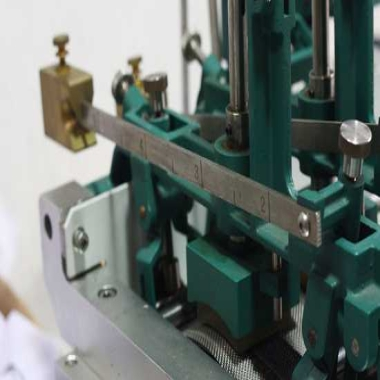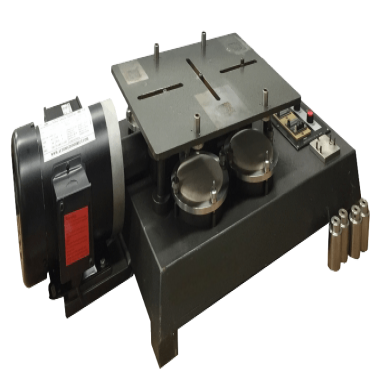Time: Popularity:0times
In textile quality assessment and durability testing, the Martindale and Wyzenbeek abrasion tests, as two core testing methods, have long provided crucial evidence for evaluating wear resistance in the global textile industry. While both aim to simulate the wear behavior of materials in actual use, their testing principles, motion methods, and applicable scenarios differ fundamentally.
A correct understanding of the differences between these two methods is not only fundamental to quality control but also crucial for companies to develop testing strategies for different markets and product types. From complex multi-directional rotational friction to unidirectional linear reciprocating mechanical motion, and from mainstream European standards to high-recognition in the North American market, these two testing systems together constitute a dual dimension for evaluating textile abrasion resistance. An in-depth analysis of their technical characteristics and applicable scopes can help manufacturers, brands, and testing organizations more scientifically select the appropriate method, thereby improving product development efficiency and market compliance.
Both the Wyzenbeek and Martindale tests are abrasion/friction tests used to assess different properties of textiles. The Wyzenbeek test involves friction along both the warp and weft yarns of a fabric. In contrast, the Martindale test involves a scrubbing motion. Success with one test method does not guarantee success with the other.
The Wyzenbeek and Martindale test methods are widely used methods for determining the abrasion resistance of fabrics. Actual performance depends on many factors, such as fiber content, texture, finish, furniture design, care, cleaning, and use.
The Wyzenbeek test method uses a Wyzenbeek machine. This machine helps to hold the sample taut and stabilize it in a frame. An approved abrasive fabric is then used to rub the test sample, cut in the warp and weft directions, back and forth. The number of scrubbing cycles achieved before yarn breakage or noticeable wear is observed is recorded as the degree of abrasion of the fabric.
The Martindale test method, on the other hand, uses an oscillating method. The fabric sample is laid flat and rubbed in a figure-of-three motion using a piece of worsted wool fabric as the abrasive. The number of cycles the fabric can withstand before objectionable changes in its appearance, such as yarn breakage, fuzzing, and holes, are recorded. The number of cycles determines the degree of abrasion.

The Wyzenbeek Abrader, a professional and precise testing instrument, focuses on measuring the wear resistance of fabrics subjected to friction with standard abrasive media or curved surfaces such as metal mesh. This unique feature makes the Wyzenbeek Abrader crucial in a wide range of fields. In particular, it demonstrates its unparalleled advantages in testing the wear resistance of materials such as textiles and leather used in automotive upholstery and furniture.
This instrument simulates the frictional environment experienced during actual use, providing continuous and stable friction testing on fabrics and accurately assessing their wear resistance. This not only helps manufacturers optimize and improve materials during the R&D phase, but also ensures that the final product exhibits excellent wear resistance in actual use, extending its service life.
In addition, the Wyzenbeek Abrader adheres strictly to a series of internationally recognized standards, including ASTM D4157. ASTM D3597. ISO 12402-7. and SAE J1948. These standards not only ensure the accuracy and reliability of test results, but also ensure that the Wyzenbeek Abrasion Tester's results are widely accepted and recognized.

The Martindale Abrasion Tester is a testing instrument designed according to the principles of J.G. Martindale and the specifications of the Wool Industry Research Association. It uses a standard wool felt as a rubber to rub against a specimen, such as cloth, to test the abrasion resistance or pilling resistance of textiles. The rubber can be replaced with other rubbers, such as sandpaper, to accommodate various testing methods and requirements. Driven by vertical and horizontal eccentrics, the test specimen is mounted on a cylinder with a standard weight, which presses against the rubber and moves along a Lissajous locus, completing a multi-directional abrasion test.
The Martindale test is a fundamental understanding of fabrics that all textile companies and laboratories need. Mastering the principles and experimental methods of the Martindale test, as well as knowledge of instrument operation, will significantly improve your company's and laboratory's productivity and efficiency.
Before conducting abrasion testing, you must always consider which method to choose. When evaluating the abrasion resistance of textiles, choosing the appropriate test method is crucial. The Martindale abrasion test and the Wyzenbeek abrasion test are two widely used standard methods, but their principles and applications differ significantly. Understanding the differences between them helps select the most appropriate test method based on actual needs, thereby accurately evaluating the durability of materials in real-world use.
In the Martindale test, the fabric is fixed to a rotating platform and rubbed in multiple directions by an abrasion head. The Martindale test uses a multi-directional rotational abrasion method, where the specimen is fixed to the platform and rubbed in a Lissajous pattern. This motion simulates the complex friction behavior experienced in daily use, such as the repeated reciprocating friction between the human body and seat fabric.
In the Wyzenbeek test, the specimen remains stationary while the abrasion head reciprocates along a straight line, simulating repeated manual rubbing or mechanical unidirectional abrasion. This motion pattern is more suitable for evaluating the performance of furniture or vehicle interior fabrics subjected to frequent, specific unidirectional abrasion.
The Martindale test typically uses a specified number of yarn breaks or holes of a certain size on the fabric surface as a test, focusing on the critical point of "material wear to failure."
The Wyzenbeek test, on the other hand, typically uses complete fabric breakage, the appearance of holes, or a predetermined number of friction cycles as its endpoint, placing greater emphasis on "actual wear and tear." Therefore, Martindale results are often expressed in "numbers," while Wyzenbeek uses "double rubs" to record abrasion resistance.
The Martindale test is primarily adopted by European and international standards (such as ISO 12947) and is applicable to a variety of applications, including apparel, home textiles, and automotive interiors. The Wyzenbeek test is widely used in the United States, particularly in the furniture and decorative fabrics industries, and complies with standards such as ASTM D4157.
The Martindale test, with its multi-directional, gentle friction, is suitable for both delicate fabrics and heavy materials. The Wyzenbeek test, with its unidirectional, high-load friction, is more suitable for evaluating heavier fabrics commonly used in furniture, such as velvet or coated fabrics for sofas.
Due to differences in the test methods and the types of wear simulated, the results of these two tests are not directly correlated.
The Martindale and Wyzenbeek abrasion tests differ significantly in their principles, processes, application areas, and applicable fabric types. Martindale, with its multi-directional Lissajous path friction, more comprehensively simulates complex everyday wear and tear, making it particularly suitable for apparel, high-end interiors, and delicate fabrics. The Wyzenbeek test, with its unidirectional, high-load, reciprocating test, is widely used for American furniture and heavy decorative fabrics.
It is important to note that the results of the two tests are not directly comparable due to their different motion patterns and termination criteria. Therefore, in practical applications, the choice between the two tests should be carefully considered based on the product's end-use scenario, target market regulations, and industry standards.
In today's world of advancing global trade and material innovation, a thorough understanding of the differences between these two mainstream testing methods not only helps improve the accuracy of product quality control but also provides a key technical basis for companies to optimize material selection and adapt to diverse market demands.
Ultimately, the selection of wear resistance tests should always be centered around the core principle of "simulating real-world use environments" to ensure that test results truly reflect the product's durability and practical value.
Company Phone
+86-21-6420 0566
Working hours
Monday to Friday
Mobile phone:
13816217984
Email:
info@qinsun-lab.com
